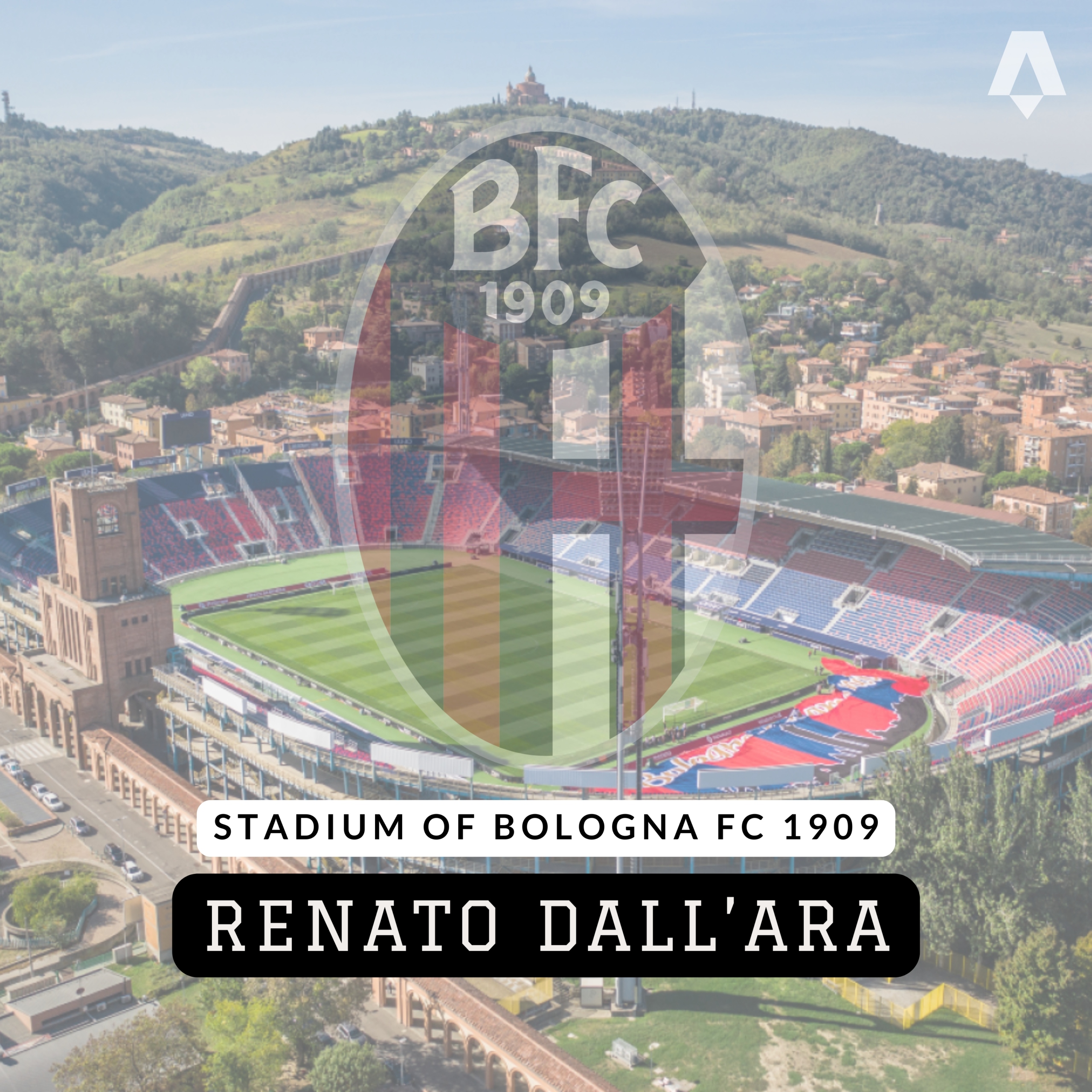Name: Stadio Renato Dall’Ara
City: Bologna
Region: Emilia-Romagna
Address:
Coordinates:
- Latitude: 44°29′32″N
- Longitude: 11°18′35″E
Build: 1927
Renovations: 2015
Capacity: 38,279
Pitch Size: 105 m x 68 m
Home teams in Serie A: Bologna FC
UEFA Category: –
Owner: –
Interesting Fact:
The multi-purpose Stadio Renato Dall’Ara had replaced the Stadio Sterlino, and, when it was built in 1927, it was named Stadio Littoriale. It later received its current name after the former president of Bologna – Renato Dall’Ara.
Stadio Renato Dall’Ara is Bologna’s first pitch, used for both training and matches, was constructed on the vast Piazza d’Armi square in the Prati di Caprara fields. The area, near the Porta San Felice, is now home to one of the city’s hospitals. The goals were only temporary and had to be put up and taken down as required and it was in these slightly unusual surroundings that Bologna won the Emilia Romagna Championship in 1910. However, the club was then told to leave by the landlord – the Italian government – because the local shepherd who used the field to graze his flock was unhappy with the team’s presence. Having registered for the Prima Categoria (the contemporary equivalent of Serie A) for the 1910-11 season, it became impossible to use the picturesque location to play matches so the club moved to Cesoia.
Their new home was found on an undeveloped stretch of land along Via Massarenti, now known as Strada San Vitale, between the Via della Cesoia and Via Paolo Fabbri. Even today, the Ristorante Cesoia is situated at 90 Via Massarenti and the first floor of the same building once housed the players’ changing rooms. A picket fence marked out the edge of the playing area – now blessed with permanent goals – and, in view of the growing crowds of friends and passers by (the first fans!), a small wooden stand was constructed. Forced to move out in 1913 because of a change in the league rules, Bologna’s players – led by President Rodolfo Minelli – found a new patch of grass on which to mark out a pitch in the Ragno district on what was Via Toscana (now Via Murri) in the shadow of the Villa Hercolani. The “Sterlino” pitch – coming from “Starlén”, the dialect name for this foothill area – was enclosed by a wooden fence accompanied by a large iron-clad stand built around a reinforced concrete core whilst an earthwork terrace was built for working-class fans. The ground hosted its first match on the 30th November 1913 following a ceremony which featured a speech by the celebrated poet Lipparini, but a few minutes after kick-off people began to notice that something wasn’t quite right: there was a slope! One goal was over one meter higher than the other.
At the end of the Great War, it was decided that the Sterlino needed to be redeveloped having been damaged during the conflict. Much larger than its predecessor, a new stand was built which was the first in Italy to have a gantry. The earthwork terrace was also modified in 1921 so that it could now hold several thousand spectators. After the death of Angelo Badini, the building was dedicated to his memory and the Sterlino set the scene for the advances which led on to Bologna’s glory years during the 1930s. In 1927, however, Bologna moved to a magnificent new home: the “Littoriale”.


